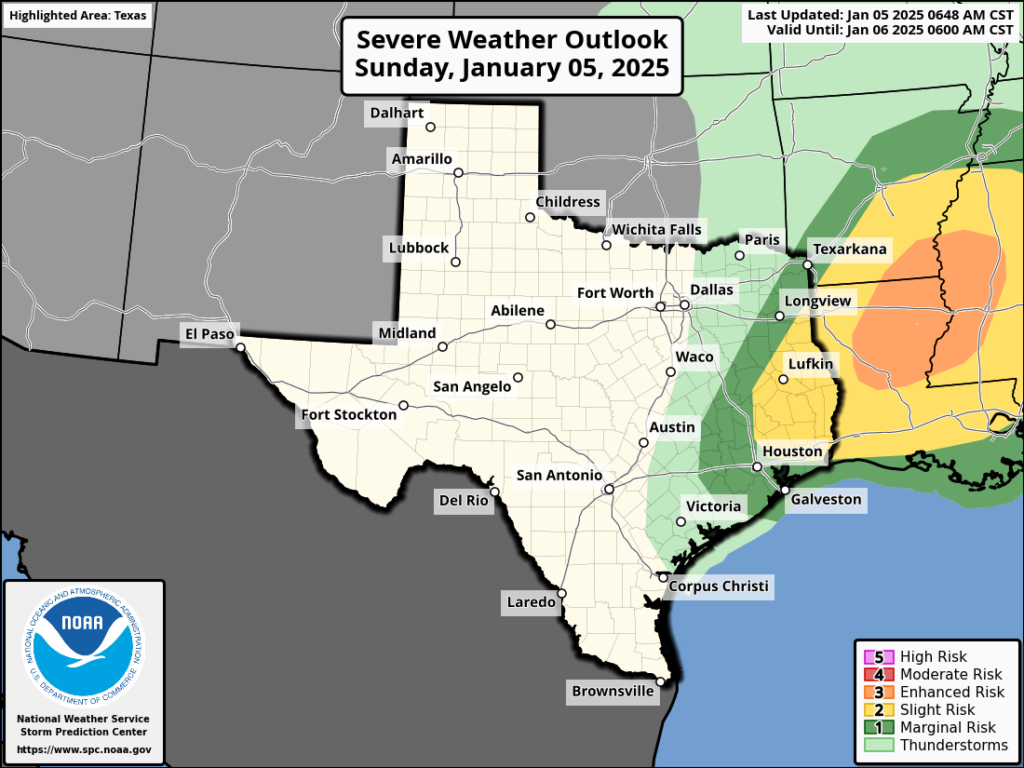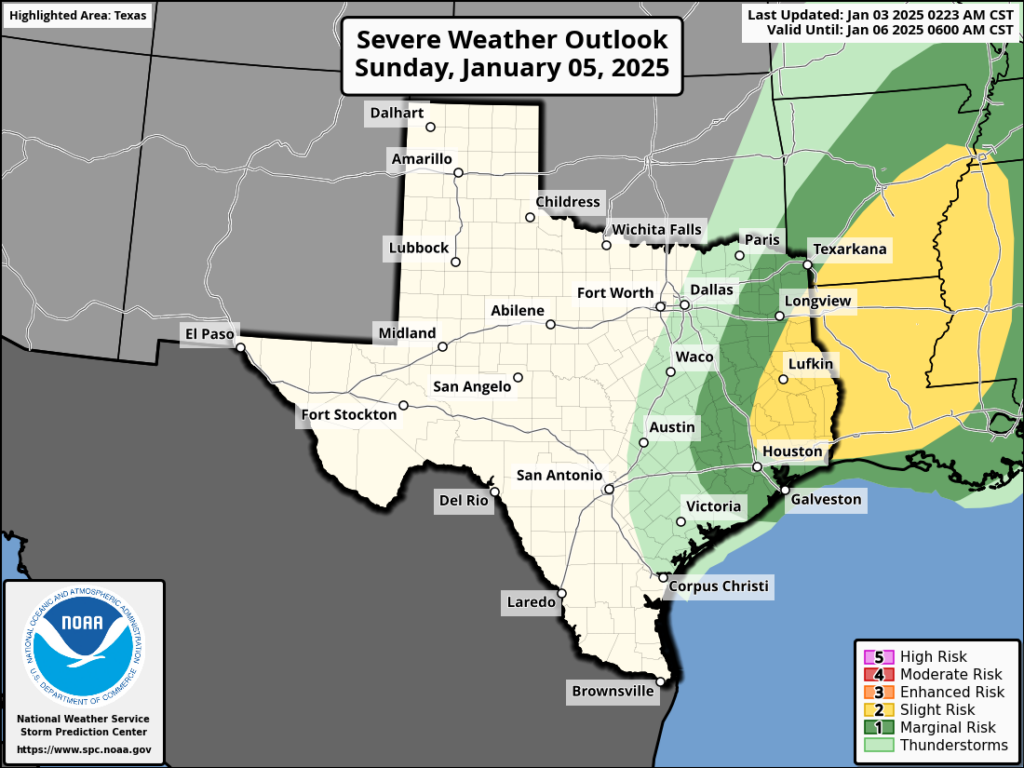In brief: The much-discussed Arctic front is on schedule for this afternoon, bringing freezing temperatures to the Houston area after midnight tonight. This post discusses how cold we’re going to get, and whether precipitation on Thursday will just be rain, or something else.
Cold coming
The first few days of the new year have been relatively mild, with high temperatures in 60s and 70s. That will change in a big way later today, with the strongest front of the winter season on track to arrive in the Houston area this afternoon. This front will usher in a freeze to inland areas, including locations such as Katy and The Woodlands, by around midnight. Temperatures should reach freezing for all but areas immediately along the coast by Monday morning. Colder than normal weather will stick around for the remainder of the week.

Frontal passage
Some showers and possibly a few thunderstorms will accompany the front’s passage today as it moves from northwest to southeast across Houston. At present I expect it to reach northwest Harris County by around 2 to 4 pm, and swoop down to the coast by around sunrise. There is a slight chance of some severe weather with the front, especially to the northeast of Houston, in the form of stronger thunderstorms. But mostly, everyone will notice the winds kicking up, and drier air moving in. Temperatures fall pretty quickly behind the front.

Monday, Tuesday, and Wednesday
This will be the coldest period, with daytime high temperatures in the 40s. Each night will bring freezing, or near-freezing temperatures throughout Houston. It’s possible that the urban heat island effect could keep some parts central Houston at or just above freezing. But the bottom line is that if you have tender plants, and do not live right on the coast, they are susceptible to freezing.
However, most of the Houston metro area will not face a hard freeze. That is when air temperatures fall into the mid-20s or below, at which point one needs to worry about pipes. So from an infrastructure standpoint, I’m not too concerned about this freeze. A hard freeze is possible for areas along and north of Highway 105.

A wintry mix on Wednesday night?
There is still some uncertainty about conditions on Wednesday night into Thursday morning. A low-pressure system is likely to being a healthy chance of rain into the forecast late Wednesday night and into Thursday. Overall we may see as much as 1 inch of rainfall. The question is whether temperatures are cold enough on Thursday morning to support a wintry mix, be it snow, sleet, freezing rain, or what have you. Another factor is when the precipitation starts, as by mid-morning temperatures should be comfortably above freezing.
My sense is that most of Houston probably will just see rain, but that areas inland of Interstate 10 have a chance of seeing snow or sleet. I think it’s a low chance at this point, maybe 10 or 20 percent. But it’s something we’ll keep an eye on considering the potential for mischief with transportation on Thursday morning.







